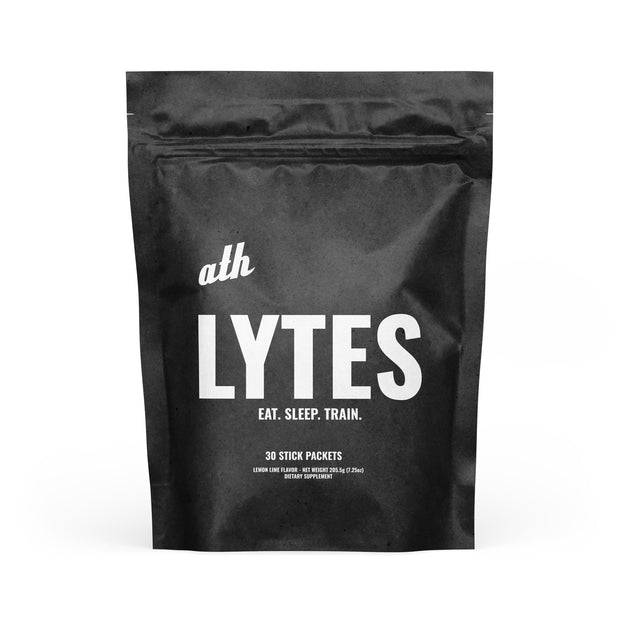Our editorial team is made up of subject matter experts with extensive, real-world clinical experience who are highly trained in evaluating clinical research. Read more about our editorial policy here.
What is Maltodextrin? Uses, Pros, and Cons

Maltodextrin, a common food additive, has recently gained attention and sparked debate over its health implications. With its presence in everything from processed foods to sports drinks, many people are wondering about the potential effects on health.
In this article, we’ll break down what maltodextrin is, why it’s used, and the pros and cons associated with it.
KEY TAKEAWAYS
- Maltodextrin is a white powder and processed carbohydrate that is added to foods and supplements as a thickener, sweetener, and quick energy source.
- Maltodextrin can cause blood sugar spikes, making it less ideal for those with specific health needs like diabetes or those on low-carb diets.
- In manufacturing, maltodextrin is commonly used as a flavor carrier for its cheap price tag.
- Maltodextrin has pros and cons - depending on your lifestyle and needs.
LET'S CUT TO THE POINT - WHAT IS MALTODEXTRIN?
Maltodextrin is a carbohydrate made through a process called hydrolysis, which breaks down starch from sources like corn, wheat, or rice into simpler sugar molecules.
This creates a white powder with a high glycemic index, which can spike blood sugar levels quickly.
Although it's derived from plant sources, maltodextrin is highly processed during manufacturing.
Because of its versatility, its commonly added to processed foods, supplements, and sports drinks for it's thickening, stabilizing (think flavors), and shelf-life extending properties.
Maltodextrin’s primary functions fall into three main categories:
-
Food additive: Provides texture, thickness, and acts as a filler in many processed foods.
-
Carb source: Athletes, especially endurance athletes, often use supplements maltodextrin based supplements for a quick supply of carbs to support endurance, increase energy, and boost performance. Maltodextrin can also be used by athletes to help with recovery by increasing muscle glycogen.
-
Manufacturing: Helps distribute flavor compounds in foods and drinks.
NUTRITIONAL VALUE
The main components of maltodextrin are calories and carbs.
Maltodextrin has 4 calories/gram - the same as table sugar.
Other than that, it lacks nutritional value (fats, proteins, and micronutrients). Making it a great source of energy, but nothing more beyond that in the nutritional space.
For this reason, it's typically used for its functional properties, rather than its nutrient content.
While it can be beneficial for immediate energy, maltodextrin is a highly processed carbohydrate and is not suitable for those looking to avoid high-GI foods or processed ingredients.
1. MALTODEXTRIN IN FOODS
Maltodextrin is common in processed foods due to its versatility. It acts as a thickener, filler, and preservative, improving texture and stability.
Foods containing maltodextrin include:
- Sauces and dressings: Used to improve consistency and shelf life.
-
Packaged foods: Adds volume without increasing cost.
-
Instant foods: Helps ingredients blend more easily when mixed with water.
These properties appeal to manufacturers, but for consumers, maltodextrin often signals highly processed foods.
2. MALTODEXTRIN IN SUPPLEMENTS
In supplements, maltodextrin is primarily used as an energy source (think carbs) and is especially popular with endurance runners, cyclists, and ultra-marathoners.
Typically found in powders, chews, and gels - maltodextrin supplements are designed for easy and convenient consumption during training and events.
Due to its high glycemic index and easy digestibility, it provides a quick source of energy to increase endurance, reduce fatigue, and improve overall performance.
PROS
- Provides quick energy
- Helps with recovery
- Great for endurance and those looking to increase their carb intake to fuel performance
CONS
- Not suitable for all athletes
- For athletes requiring fast fuel, maltodextrin can be useful and beneficial. However, for those on low-carb diets or with insulin resistance, it may be less suitable due to its impact on blood sugar
3. MALTODEXTRIN IN MANUFACTURING
In manufacturing, maltodextrin is commonly used as flavor carrier.
All flavors need a carrier to take them from a liquid extract to a dry powder.
The carriers are the base material that the liquid flavors are either plated or spray dried on to. Their role is to evenly distribute the flavor and provide stability and shelf life.
Maltodextrin is the leading flavor carrier used in manufacturing due its low cost.
Since it's used in minuscule amounts and used in the manufacturing process, the FDA does not require it to be disclosed on labels.
However, this can cause issues for those same individuals we spoke of above (diabetics, low carb, etc).
A better option, would be acacia gum.
It's natural, minimally processed, won't spike blood sugar, and is overall a cleaner ingredient when used as a flavor carrier.
WHO SHOULD USE MALTODEXTRIN...
- Athletes
- Endurance athletes - cyclists, runners, ultramarathoners
- Individuals that are not affected by high carb diets
Endurance athletes and those needing a quick energy boost may choose to consume maltodextrin.
Maltodextrin is rapidly absorbed, making it ideal for refueling after intense workouts or supporting prolonged physical activity.
his fast-acting carbohydrate helps sustain energy levels during high-intensity or endurance activities when quick energy is essential.
WHO SHOULDN'T USE MALTODEXTRIN...
- Low carb/keto
- Diabetics
- Celiac/gluten sensitive
For some individuals, maltodextrin may not be the best choice due to its high glycemic index and processed nature. Here are groups who may want to avoid or limit their intake:
Low-carb and keto dieters: Maltodextrin’s high glycemic index causes a sharp rise in blood sugar, making it incompatible with low-carb and ketogenic diets.
People with type 2 diabetes or insulin sensitivity: Due to its impact on blood sugar, maltodextrin may pose risks for individuals managing blood glucose levels, and it’s generally best avoided by those with diabetes or insulin resistance.
Those avoiding highly processed ingredients: As a refined carbohydrate, maltodextrin lacks nutrients and doesn’t align with clean eating or whole-food-based dietary preferences.
Those with celiac disease or gluten sensitivity: Some maltodextrin is gluten-free, such as when it's made from corn. However, some is derived from wheat and may contain traces of gluten. So anyone avoiding gluten should check the source.
THE PROS AND CONS
PROS
Maltodextrin can be a useful ingredient for those needing a quick boost of energy or a versatile additive in food products. Its rapid absorption provides fast fuel, which can be particularly useful for endurance athletes whose energy demands are high.
Additionally, maltodextrin’s thickening and stabilizing properties improve the texture and consistency of various foods, from sauces to snacks, which benefits manufacturers and consumers alike. For companies, maltodextrin is a cost-effective choice to add bulk and volume without significantly increasing costs.
-
Quick energy source: Ideal for those needing fast fuel, such as endurance athletes.
-
Food stabilizer: Improves texture and consistency in foods and beverages.
-
Longer shelf life: Helps products stay fresh longer.
-
Cost-effective: Adds bulk affordably in many food products.
CONS
While maltodextrin offers specific advantages, it also has potential downsides, especially for people with dietary restrictions or specific health concerns. Its high glycemic index can cause rapid blood sugar spikes, making it unsuitable for low-carb diets or individuals with diabetes.
Maltodextrin is also a highly processed carbohydrate with minimal nutritional value beyond calories, which may be unappealing for those seeking whole-food ingredients.
Furthermore, emerging research suggests that regular consumption of maltodextrin could negatively impact gut health, disrupting beneficial bacteria and potentially leading to digestive issues.
-
High glycemic index: Causes blood sugar spikes, unsuitable for low-carb diets or people with diabetes.
-
Highly processed: Minimal nutritional value, lacking in vitamins, minerals, and fiber.
-
Potential gut disruption: Some studies suggest that maltodextrin may affect the balance of bacteria in the gut.
-
Not ideal for blood sugar management: Risky for individuals with insulin resistance or diabetes.
IS MALTODEXTRIN SAFE?
The Food and Drug Administration (FDA) has classified maltodextrin as Generally Recognized as Safe (GRAS), and it’s widely accepted as a food additive. However, those with specific dietary needs, such as individuals on low-carb diets or with blood sugar concerns, may benefit from limiting maltodextrin intake.
TLDR;
Maltodextrin is a processed carbohydrate often added for texture and rapid energy, but it can cause a quick spike in blood sugar.
Acacia gum is a cleaner alternative that may support gut health, making it ideal for those who prefer minimally processed ingredients.
While endurance athletes may benefit from maltodextrin’s fast energy, those on low-carb diets or with blood sugar concerns should approach it cautiously.
FREQUENTLY ASKED QUESTIONS
Quick answers to our most frequently asked questions...
WHAT IS MALTODEXTRIN MADE FROM?
Maltodextrin is made from the starches of:
- Corn
- Potato
- Rice
- Tapioca
WHAT FOODS CONTAIN MALTODEXTRIN?
Foods with maltodextrin include:
- Condiments, dressings, marinades, sauces
- Pastas, cereals
- Baked goods
- Instant mixes, soups, frozen meals
- Candies, sweets
IS MALTODEXTRIN SAFE?
Yes, the FDA considers it safe, though it may not be suitable for all dietary needs.
WILL MALTODEXTRIN BREAK MY FAST?
Yes, maltodextrin consumption will break your fast. Like sugar, maltodextrin has 4 calories per gram and will spike your blood sugar kicking you out of your fast.
IS MALTODEXTRIN GOOD FOR KETO, LOW CARB, AND CARNIVORE DIETS?
No, due to its high glycemic index, it’s generally avoided in these diets.
HOW MUCH CARBS ARE IN MALTODEXTRIN?
Maltodextrin contains 4 calories per gram, similar to other carbohydrates.
WHAT ARE THE SIDE EFFECTS OF TOO MUCH MALTODEXTRIN?
Although maltodextrin is generally safe for most people, excessive intake may cause side effects, especially in sensitive individuals or those with dietary restrictions. Here are potential side effects:
- Blood Sugar Spikes: Maltodextrin has a high glycemic index, which means it can rapidly increase blood sugar levels. For individuals with diabetes or insulin resistance, this may lead to unwanted blood sugar spikes, which could increase the risk of long-term health issues.
- Weight Gain: Maltodextrin is a carbohydrate that provides calories but little nutritional value. Overconsumption, particularly in those not using the immediate energy boost, may lead to weight gain.
- Gut Imbalance: Some research suggests that maltodextrin may alter gut bacteria composition by promoting the growth of harmful bacteria, potentially leading to gut health concerns.
- Allergic Reactions: Though rare, some individuals may experience allergic reactions to maltodextrin, potentially leading to symptoms like rashes, itching, or hives.
- Digestive Discomfort: Maltodextrin can cause gastrointestinal side effects like bloating and gas, especially when consumed in large amounts or in individuals with sensitive digestive systems.



